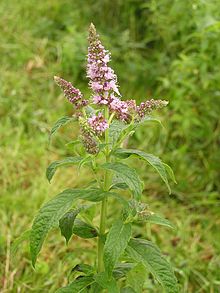Mentha_sylvestris
Mentha longifolia
Species of flowering plant in the family Lamiaceae
Mentha longifolia, also known as horse mint,[1] brookmint,[2] fillymint or St. John's horsemint, is a species of plant in the family Lamiaceae. It is native to Europe excluding Britain and Ireland,[3] western and central Asia (east to Nepal and far western China), and northern and southern (but not tropical) Africa.[4][5][6]
You can help expand this article with text translated from the corresponding article in Italian. (September 2021) Click [show] for important translation instructions.
|
You can help expand this article with text translated from the corresponding article in German. (September 2021) Click [show] for important translation instructions.
|
